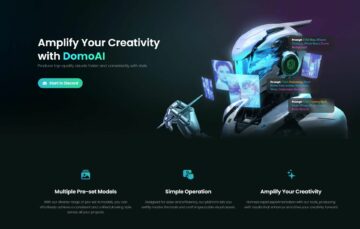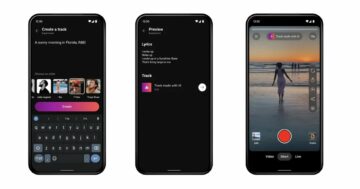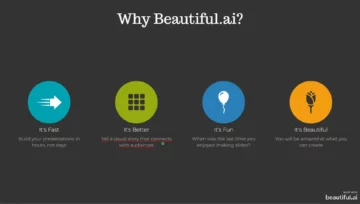Generative AI has become a hot topic in recent times, with tools like ChatGPT and Midjourney capturing the public imagination.
These tools can churn out impressive creative text formats, translate languages, write different kinds of creative content, and even create realistic images.
However, it’s important to remember that generative AI is still under development, and there are some common misconceptions about what it can and can’t do.
Misconception 1: Generative AI is a magic brain that truly understands
Generative AI systems excel at pattern recognition and producing content that mimics human creations. A model trained on a massive collection of text can ‘write’ fairly convincingly. But that doesn’t mean the AI genuinely understands the words it uses.
Unlike people, it has no lived experiences and can’t grasp abstract concepts, emotions, or intentions. It’s a powerful pattern replicator, not a sentient being.

Misconception 2: It’s going to steal all our jobs
The fear of AI-driven job losses is understandable, particularly in creative industries. Generative AI will undoubtedly change certain tasks, and some jobs may be replaced. However, history shows new technologies usually create new roles as well.
The key lies in adaptation. Learning to work with generative AI tools can open up fresh opportunities and skillsets, putting you ahead of the curve.
Misconception 3: Generative AI produces flawless, original content every time
These models are fed massive amounts of human-generated data, including biases, inaccuracies, and stereotypes. This can slip into their output. Take image generators – they might struggle with representing diverse groups of people or understanding subtle nuances in requests, just like how Google Gemini did previously.
Additionally, AI often recycles existing ideas, making truly original content less common. It’s a powerful tool, but it’s not a substitute for human creativity and critical judgment.

Misconception 4: Generative AI is only for artists and writers
While creative uses get a lot of spotlights, generative AI has widespread applications outside of art and writing.
Here are a few examples:
- Customer service: Chatbots powered by generative AI can provide more personalized and responsive interactions with customers.
- Education: Creating customized learning materials, summarizing complex topics, and even generating different question styles for assessments.
- Code generation: Assisting programmers by suggesting code snippets and even creating basic functions, saving time.
Misconception 5: All generative AI models are the same
There are big differences between generative AI models, each with its strengths and weaknesses. Some focus on text, others on images, and there are even models specializing in music or code.
Furthermore, a model’s performance heavily depends on what it has been trained on. A model trained on medical articles won’t generate engaging fiction. Choosing the right model for the task is crucial.

Potential with a side of caution
Generative AI is undeniably a powerful tool with transformative potential in various areas of life. It will change how we work and create, and we haven’t even begun to uncover the full scope of its possible uses.
However, it’s important to go beyond the buzzwords and approach this technology with a healthy dose of realism. Understanding generative AI’s strengths and limitations will allow us to harness it effectively while mitigating risks like misinformation and loss of creative control.
The key is to approach generative AI as a collaborator, not as a replacement for human ingenuity.
Featured image credit: GarryKillian/Freepik
- SEO Powered Content & PR Distribution. Get Amplified Today.
- PlatoData.Network Vertical Generative Ai. Empower Yourself. Access Here.
- PlatoAiStream. Web3 Intelligence. Knowledge Amplified. Access Here.
- PlatoESG. Carbon, CleanTech, Energy, Environment, Solar, Waste Management. Access Here.
- PlatoHealth. Biotech and Clinical Trials Intelligence. Access Here.
- Source: https://dataconomy.com/2024/04/08/generative-ai-misconceptions/
- :has
- :is
- :not
- $UP
- 1
- 11
- 13
- 15%
- 17
- 19
- 2%
- 21
- 23
- 24
- 25
- 27
- 29
- 4
- 5
- 58
- 66
- 7
- 74
- 9
- a
- About
- ABSTRACT
- adaptation
- ahead
- AI
- AI models
- AI systems
- All
- allow
- amounts
- and
- applications
- approach
- ARE
- areas
- Art
- articles
- artificial
- Artists
- AS
- assessments
- assisting
- At
- basic
- BE
- become
- been
- begun
- being
- between
- Beyond
- biases
- Big
- Brain
- but
- by
- CAN
- Capturing
- certain
- change
- chatbots
- ChatGPT
- choosing
- code
- collection
- Common
- complex
- concepts
- contain
- content
- control
- create
- Creating
- creations
- Creative
- creativity
- critical
- crucial
- curve
- Customers
- customized
- data
- depends
- Development
- DID
- differences
- different
- diverse
- do
- Doesn’t
- dose
- each
- effectively
- emotions
- engaging
- Even
- Every
- examples
- Excel
- existing
- Experiences
- fact
- fairly
- fear
- Fed
- few
- Fiction
- Focus
- For
- formats
- fresh
- from
- full
- functions
- Gemini
- generate
- generating
- generation
- generative
- Generative AI
- generators
- genuinely
- get
- Go
- going
- grasp
- Group’s
- harness
- healthy
- heavily
- High
- history
- HOT
- How
- How We Work
- However
- HTTPS
- human
- ideas
- image
- images
- imagination
- imaginations
- important
- impressive
- in
- Including
- industries
- influence
- intentions
- interactions
- into
- IT
- ITS
- Job
- Jobs
- jpg
- just
- Key
- kinds
- Lack
- Languages
- learning
- less
- lies
- Life
- like
- limitations
- loss
- losses
- Lot
- magic
- Making
- massive
- materials
- max-width
- May..
- mean
- medical
- MidJourney
- might
- misconceptions
- Misinformation
- mitigating
- mitigating risks
- model
- models
- more
- Music
- New
- New technologies
- no
- nuances
- of
- often
- on
- only
- open
- or
- original
- Others
- our
- out
- output
- outside
- particularly
- Pattern
- People
- performance
- Personalized
- plato
- Plato Data Intelligence
- PlatoData
- possible
- potential
- powered
- powerful
- produces
- producing
- Programmers
- provide
- public
- Putting
- question
- realism
- realistic
- recent
- recognition
- remember
- replaced
- replacement
- representing
- requests
- responsive
- right
- risks
- roles
- same
- saving
- scope
- separating
- service
- Shows
- side
- some
- specializing
- steal
- Still
- strengths
- Struggle
- styles
- subtle
- Systems
- Take
- Task
- tasks
- Technologies
- Technology
- text
- that
- The
- their
- There.
- These
- they
- this
- time
- times
- to
- tool
- tools
- topic
- Topics
- trained
- transformative
- translate
- true
- truly
- uncover
- undeniably
- under
- understandable
- understanding
- understands
- undoubtedly
- us
- uses
- usually
- various
- vary
- we
- weaknesses
- WELL
- What
- which
- while
- widespread
- will
- with
- words
- Work
- write
- writing
- you
- zephyrnet











